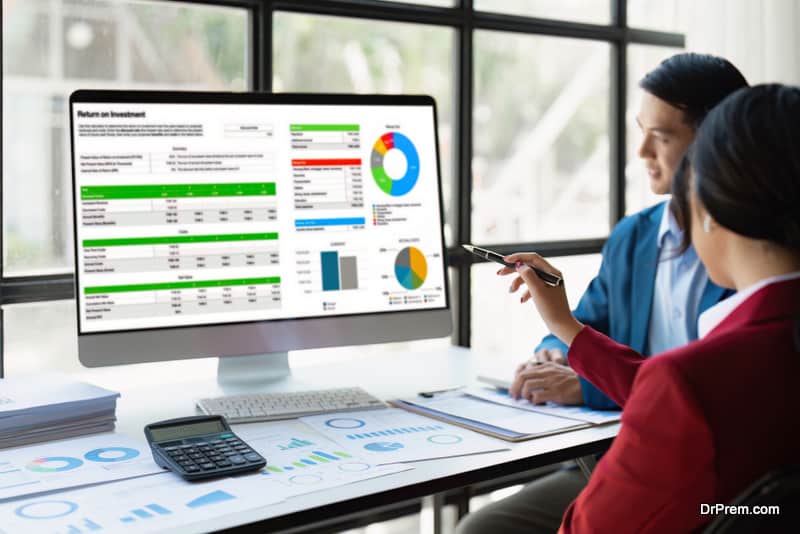Digital accounting and management solutions have revolutionized the way businesses manage their finances. With the help of these solutions, businesses can efficiently manage their financial records and make informed decisions based on real-time data. In this article, we will explore how businesses can effectively manage digital accounting and management solutions to streamline their financial operations.
Note: Logidrive provides you the best Digital Accounting And Management.
1. Choosing the Right Solution
The first step in managing digital accounting and management solutions is to choose the right solution for your business. There are several digital accounting and management solutions available in the market, each with its own set of features and capabilities. You should consider the size and complexity of your business, your budget, and your specific accounting needs when selecting a solution.
Some popular digital accounting and management solutions include QuickBooks, Xero, and FreshBooks. These solutions offer a range of features, from basic bookkeeping to advanced financial reporting and analysis.
2. Integrating with Other Tools
Once you have selected a digital accounting and management solution, you should integrate it with other tools used in your business. For example, if you use a point-of-sale (POS) system or an inventory management system, you should ensure that it can be seamlessly integrated with your accounting software. This will help ensure that all financial data is accurately recorded and easily accessible in one place.
3. Regularly Updating Financial Records
One of the most important aspects of managing digital accounting and management solutions is to ensure that your financial records are regularly updated. This includes entering data into the system, reconciling accounts, and generating financial reports.
It is important to set up a schedule for updating financial records and to assign responsibility for this task to specific individuals within your organization. This will help ensure that all financial data is accurately recorded and up-to-date, which is crucial for making informed financial decisions.
4. Automating Processes
Digital accounting and management solutions offer a range of automation features that can help streamline financial processes. For example, you can automate the invoicing process, which can save time and reduce errors. You can also set up automatic bank feeds, which will automatically import transactions from your bank account into your accounting software.
By automating processes, you can free up time for other important tasks and reduce the risk of errors that can occur when processes are done manually.
5. Ensuring Data Security
Data security is a critical aspect of managing digital accounting and management solutions. Financial data is sensitive and can be targeted by cybercriminals. You should take steps to ensure that your data is secure by implementing measures such as strong passwords, two-factor authentication, and regular backups.
Additionally, you should ensure that your accounting software is compliant with relevant data protection laws, such as the General Data Protection Regulation (GDPR) in the European Union.
6. Training Employees
Finally, it is important to train your employees on how to use digital accounting and management solutions effectively. This includes teaching them how to enter data into the system, generate reports, and use automation features.
By investing in employee training, you can ensure that your employees are equipped with the skills they need to effectively use your accounting software, which can help improve efficiency and reduce the risk of errors.
7. Using Analytics and Reporting
Digital accounting and management solutions offer powerful analytics and reporting tools that can provide valuable insights into your financial performance. By using these tools, businesses can gain a better understanding of their financial position, identify trends and patterns, and make informed decisions based on data.
For example, businesses can use reporting tools to generate balance sheets, income statements, cash flow statements, and other financial reports. These reports can be customized to provide specific insights into different aspects of the business, such as sales performance, expense trends, and profitability.
8. Collaborating with Stakeholders
Digital accounting and management solutions can facilitate collaboration between stakeholders within a business. For example, employees in different departments can access the same financial data and work together to achieve common goals.
In addition, digital accounting and management solutions can facilitate collaboration with external stakeholders, such as accountants, bookkeepers, and tax professionals. By sharing financial data with these stakeholders, businesses can ensure that their financial records are accurate and up-to-date, and that they are complying with relevant laws and regulations.
9. Staying Up-to-Date with Industry Trends
The field of digital accounting and management solutions is constantly evolving, with new features and capabilities being developed all the time. It is important for businesses to stay up-to-date with these trends in order to take advantage of the latest tools and techniques.
One way to stay up-to-date with industry trends is to attend conferences and workshops, where you can learn from experts in the field and network with other professionals. In addition, you can follow industry publications and blogs, and participate in online forums and discussions to stay informed about new developments in digital accounting and management solutions.
10. Reviewing and Improving Processes
Finally, businesses should regularly review and improve their financial processes in order to ensure that they are operating as efficiently as possible. This includes identifying areas where automation can be used to save time, reducing the risk of errors, and streamlining workflows.
By continuously reviewing and improving processes, businesses can stay ahead of the curve and ensure that they are getting the most out of their digital accounting and management solutions.
Conclusion
Digital accounting and management solutions are essential tools for businesses of all sizes and industries. By choosing the right solution, integrating it with other tools, regularly updating financial records, automating processes, ensuring data security, training employees, using analytics and reporting, collaborating with stakeholders, staying up-to-date with industry trends, and reviewing and improving processes, businesses can effectively manage these solutions and achieve their financial goals.
Article Submitted By Community Writer




